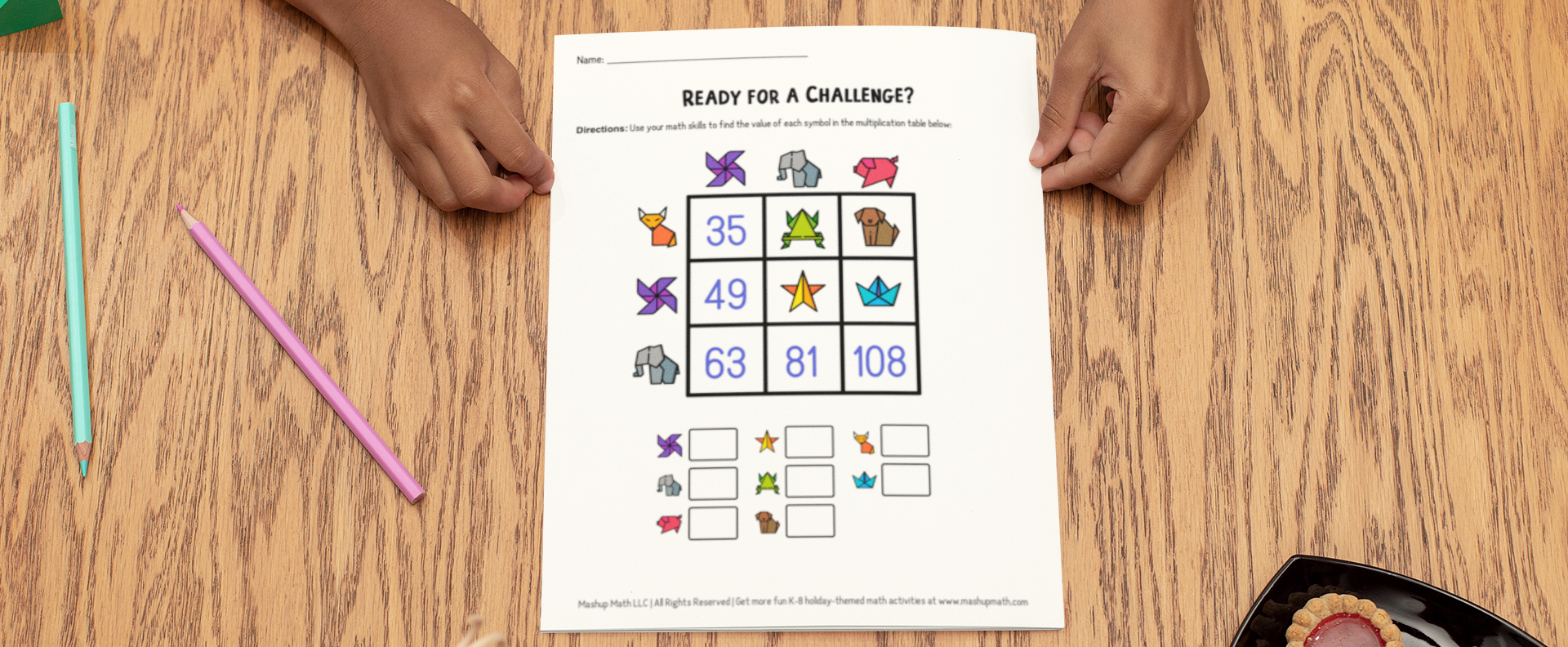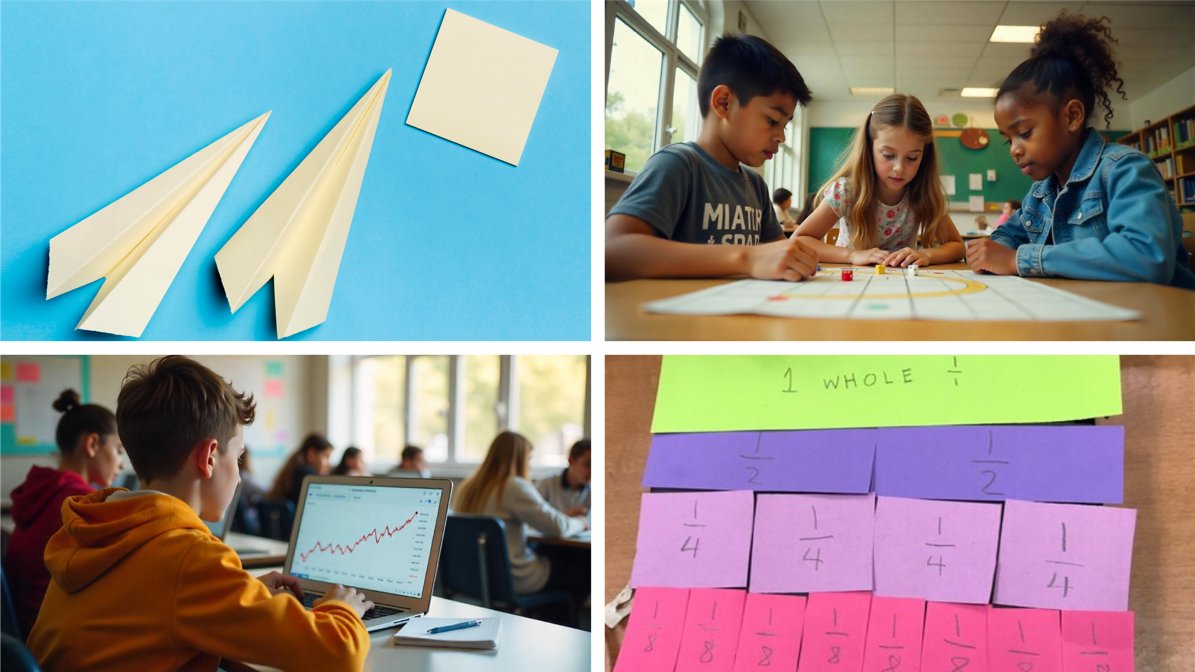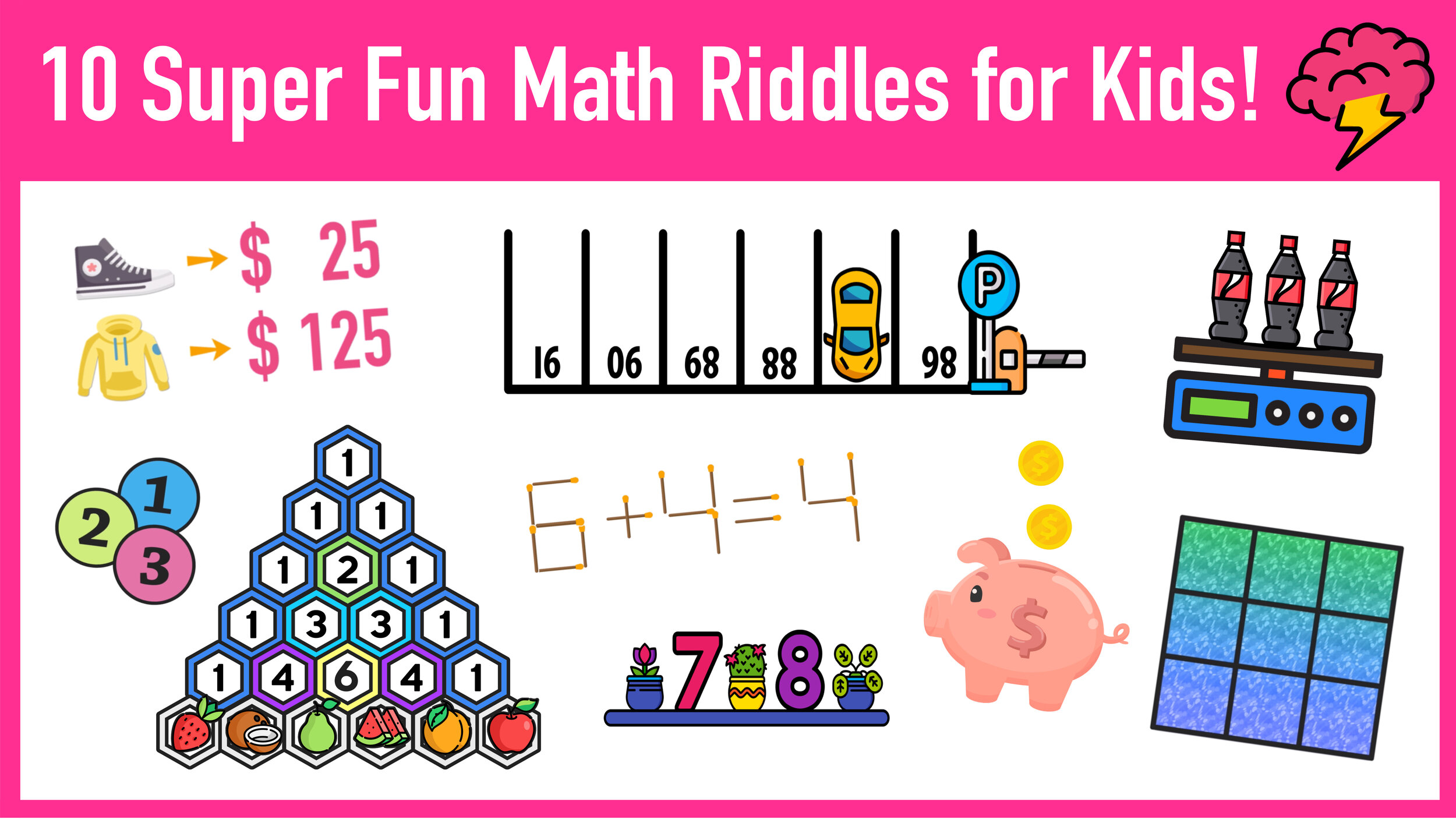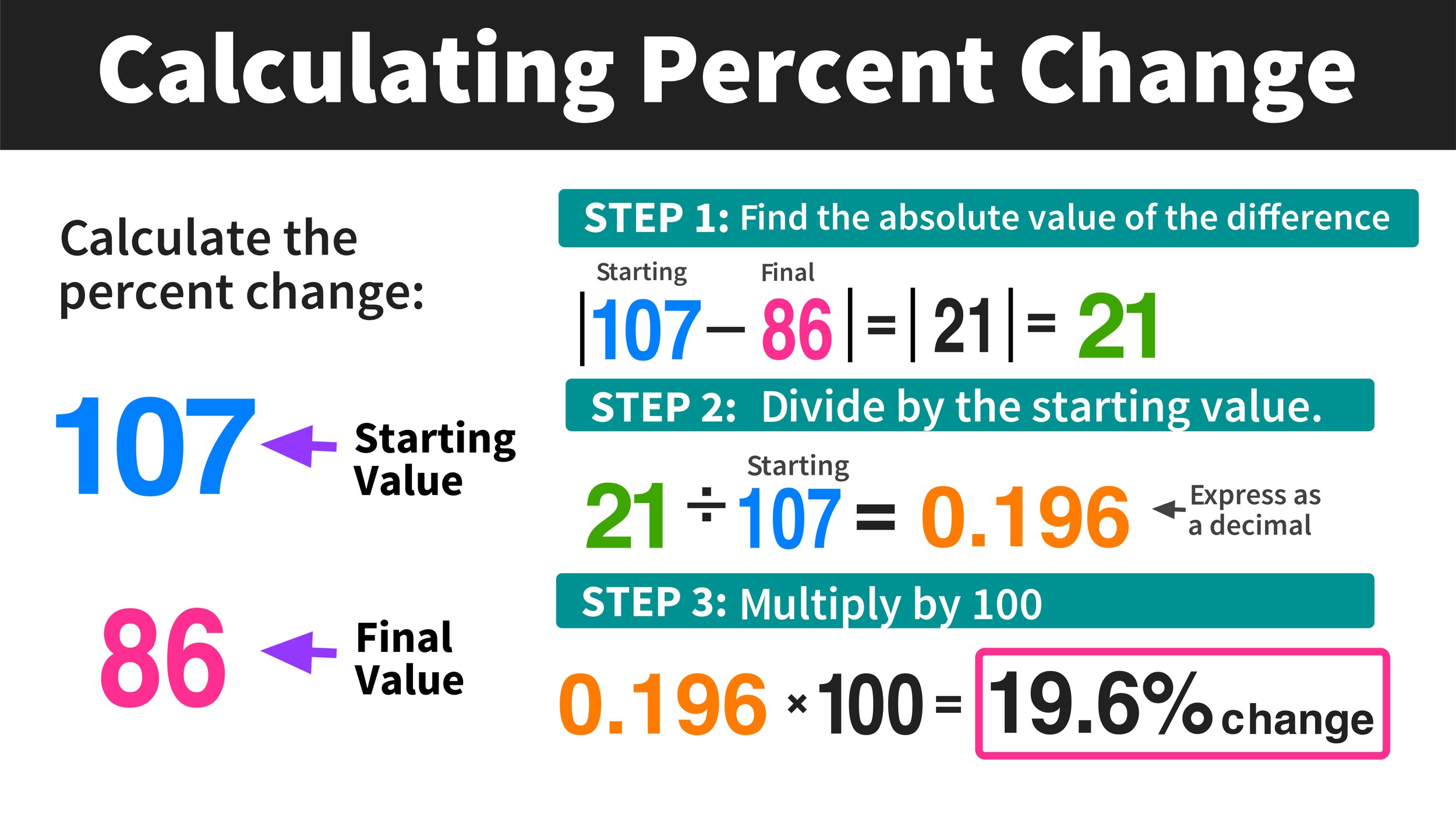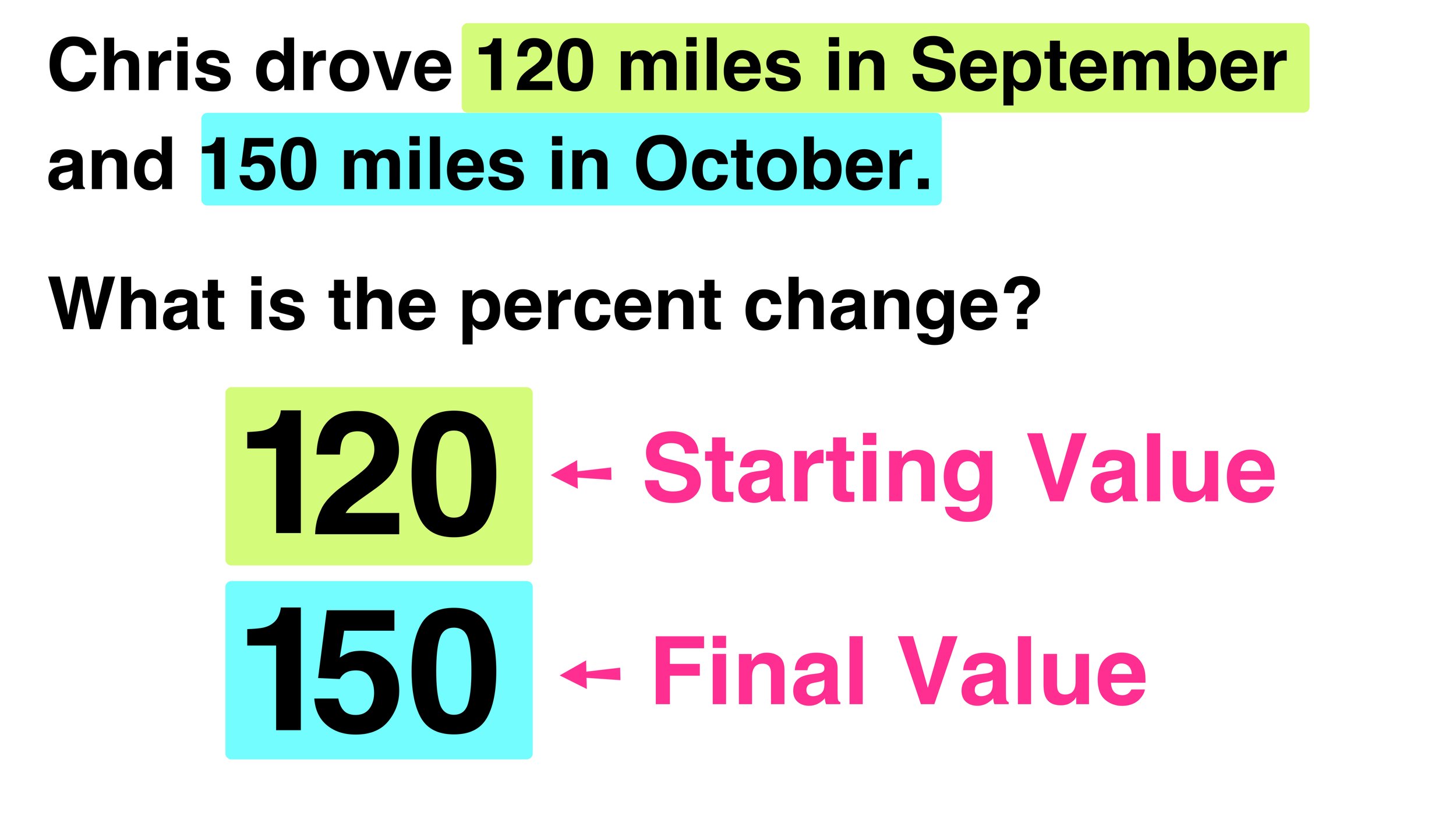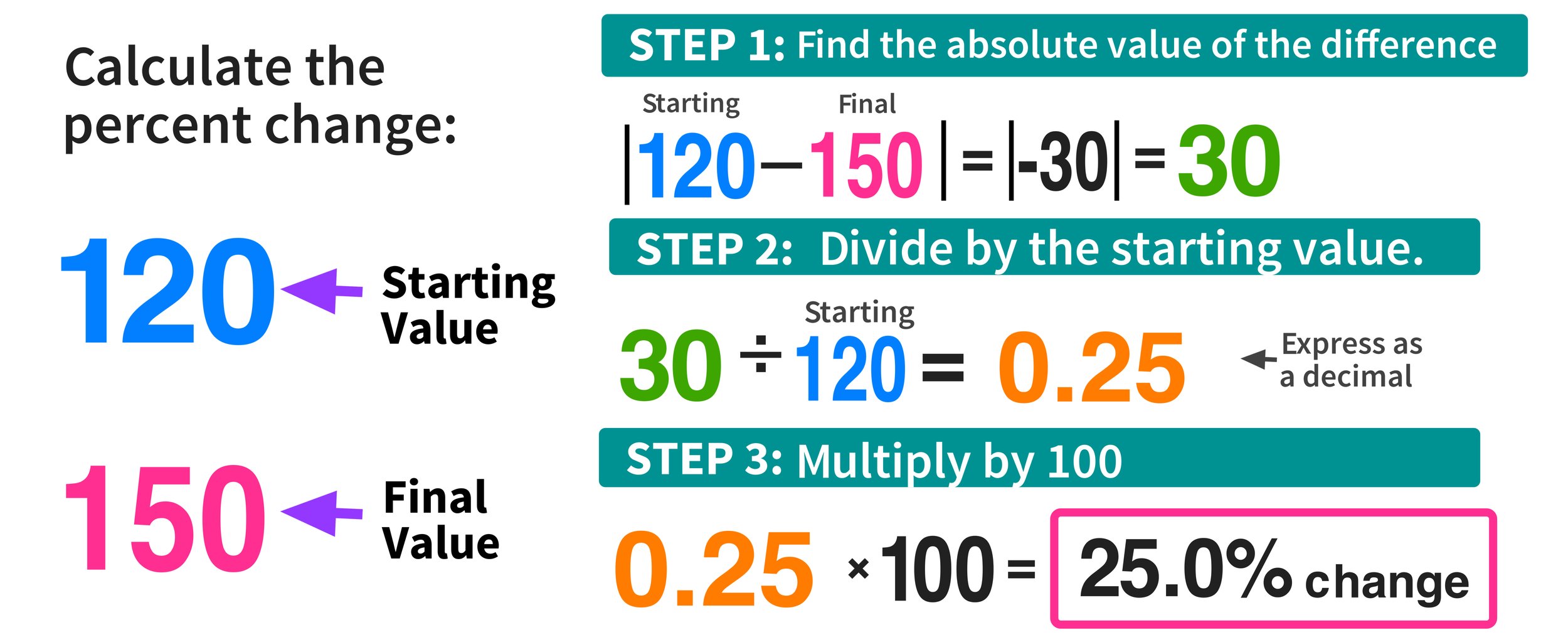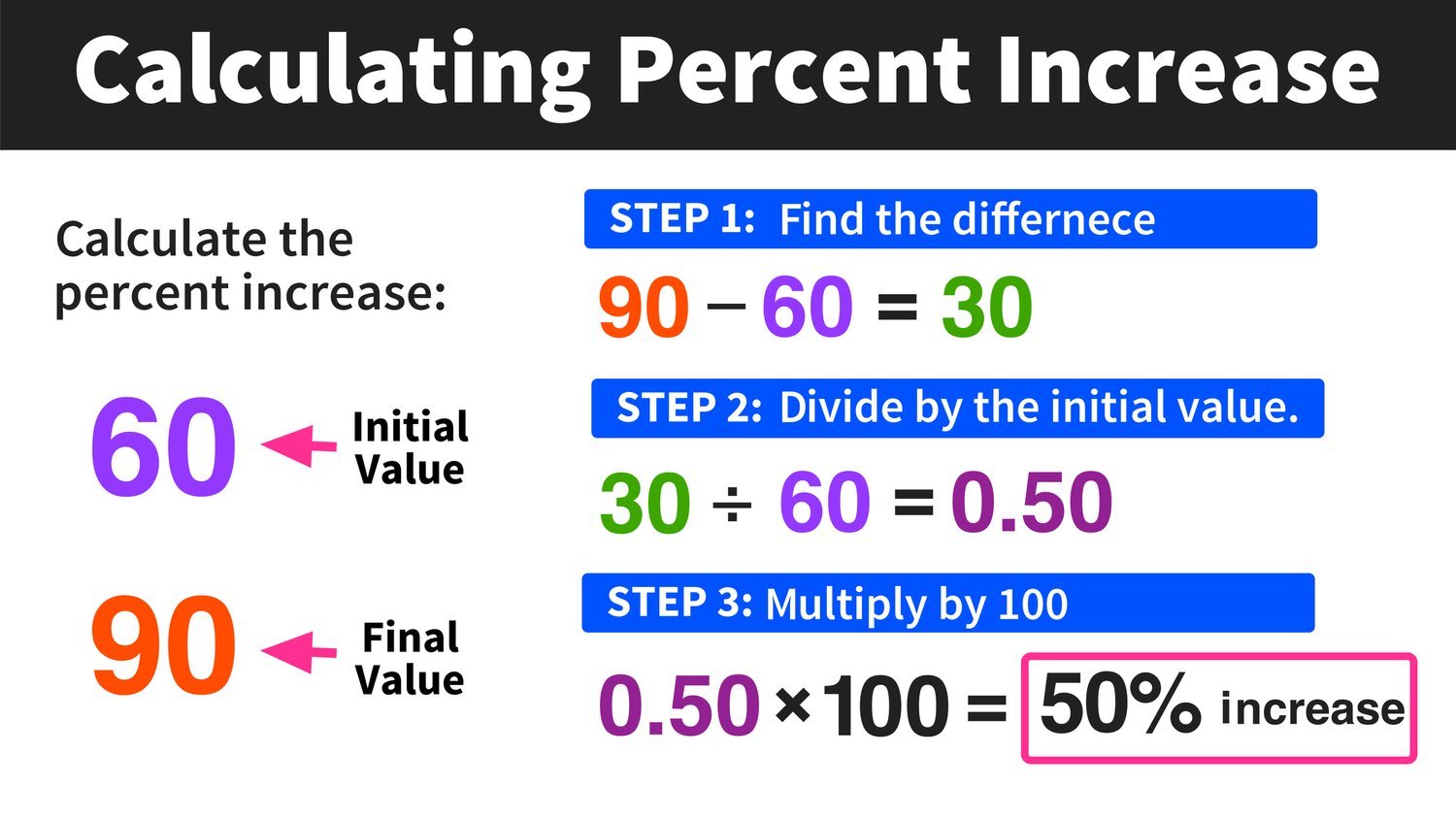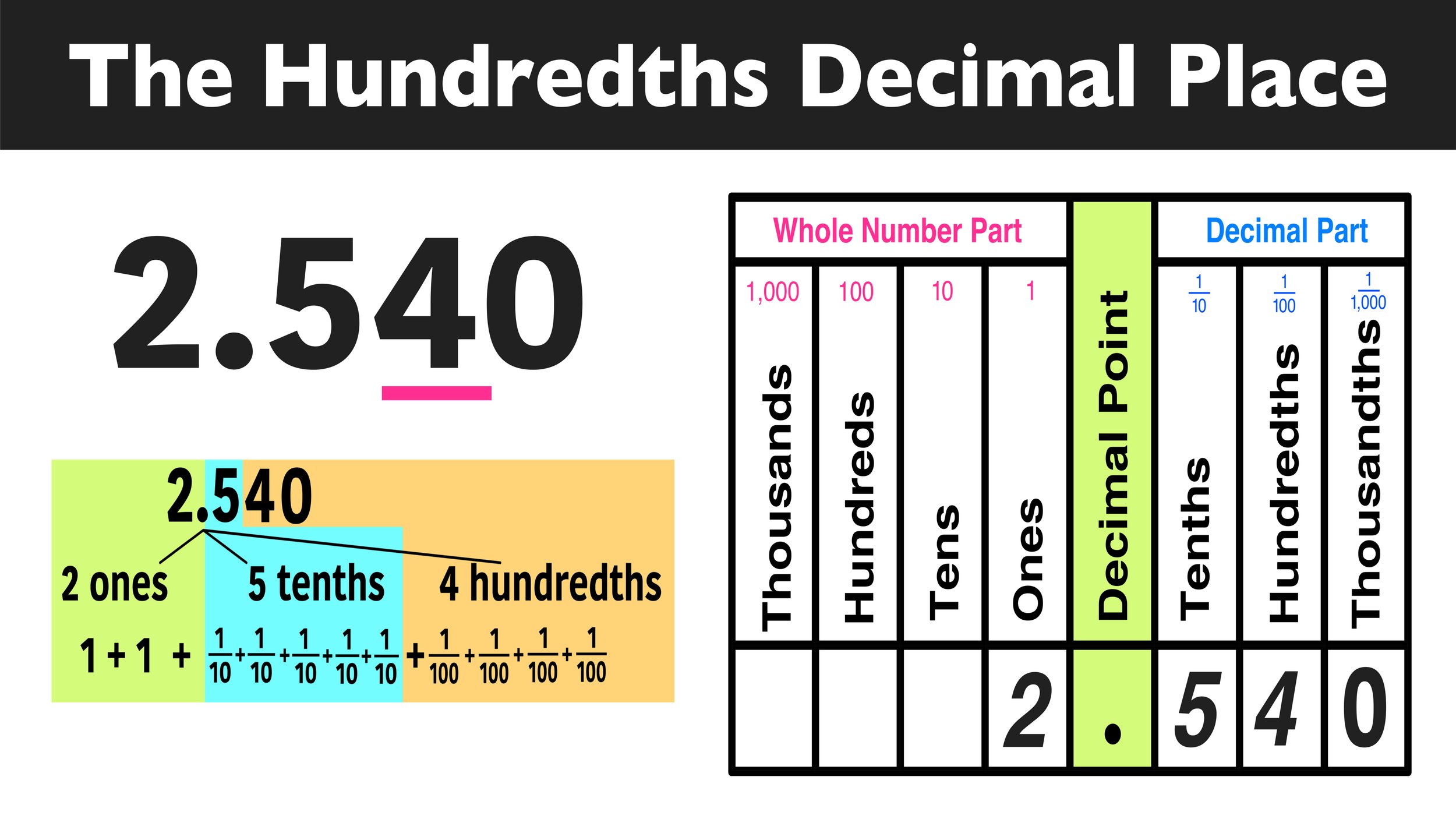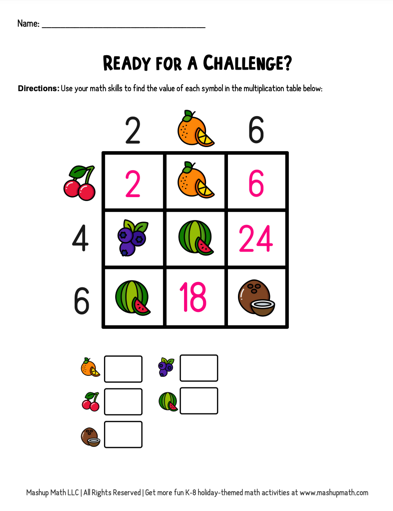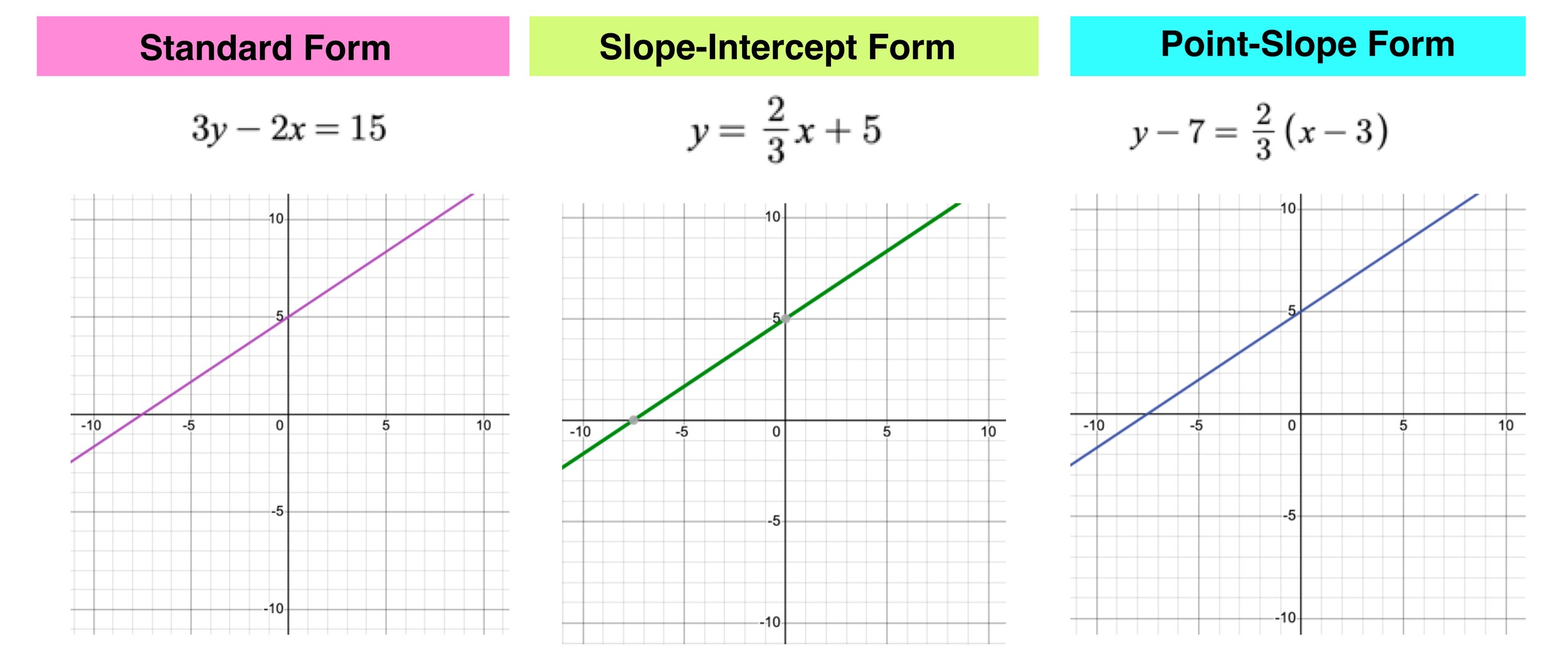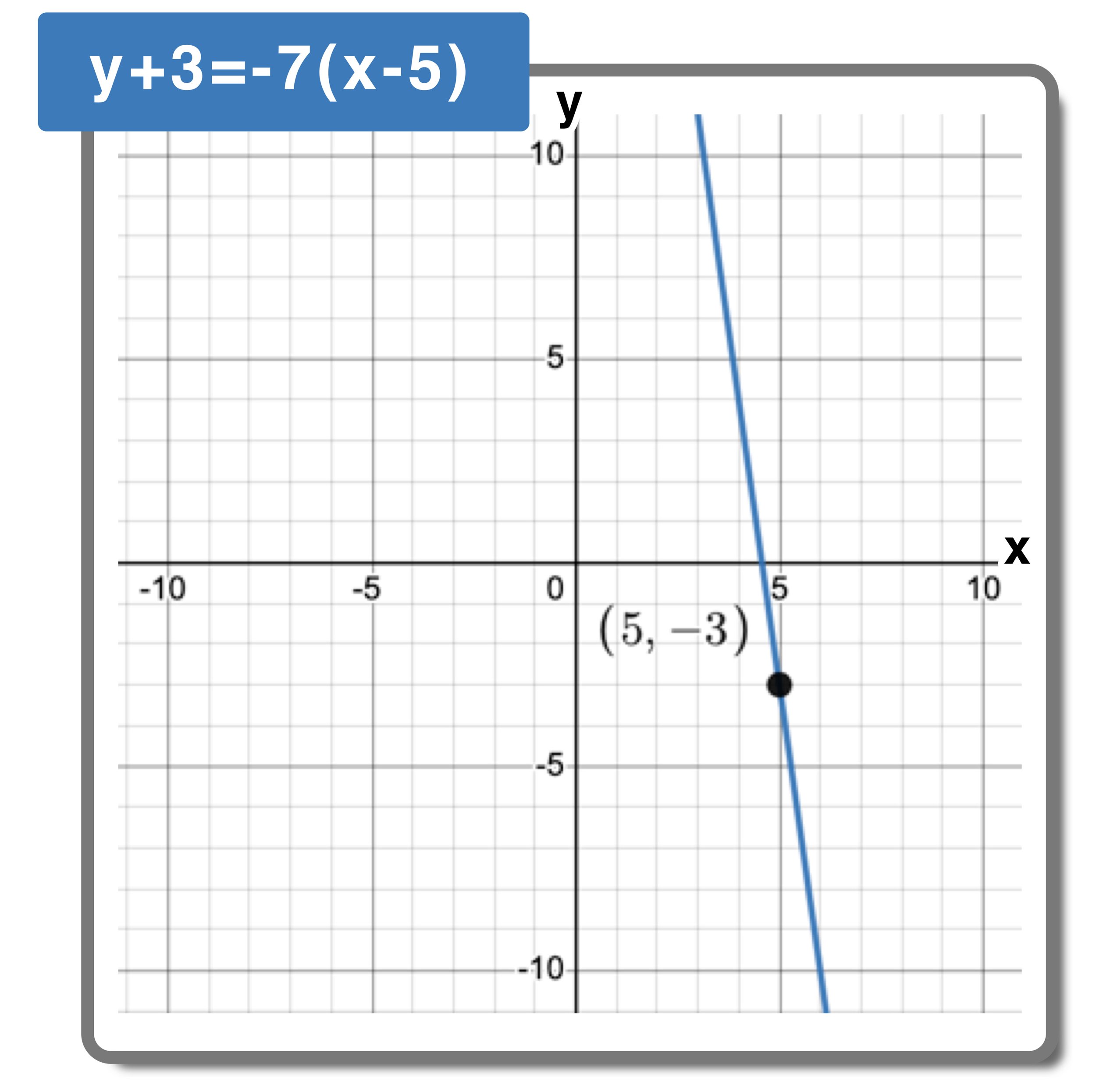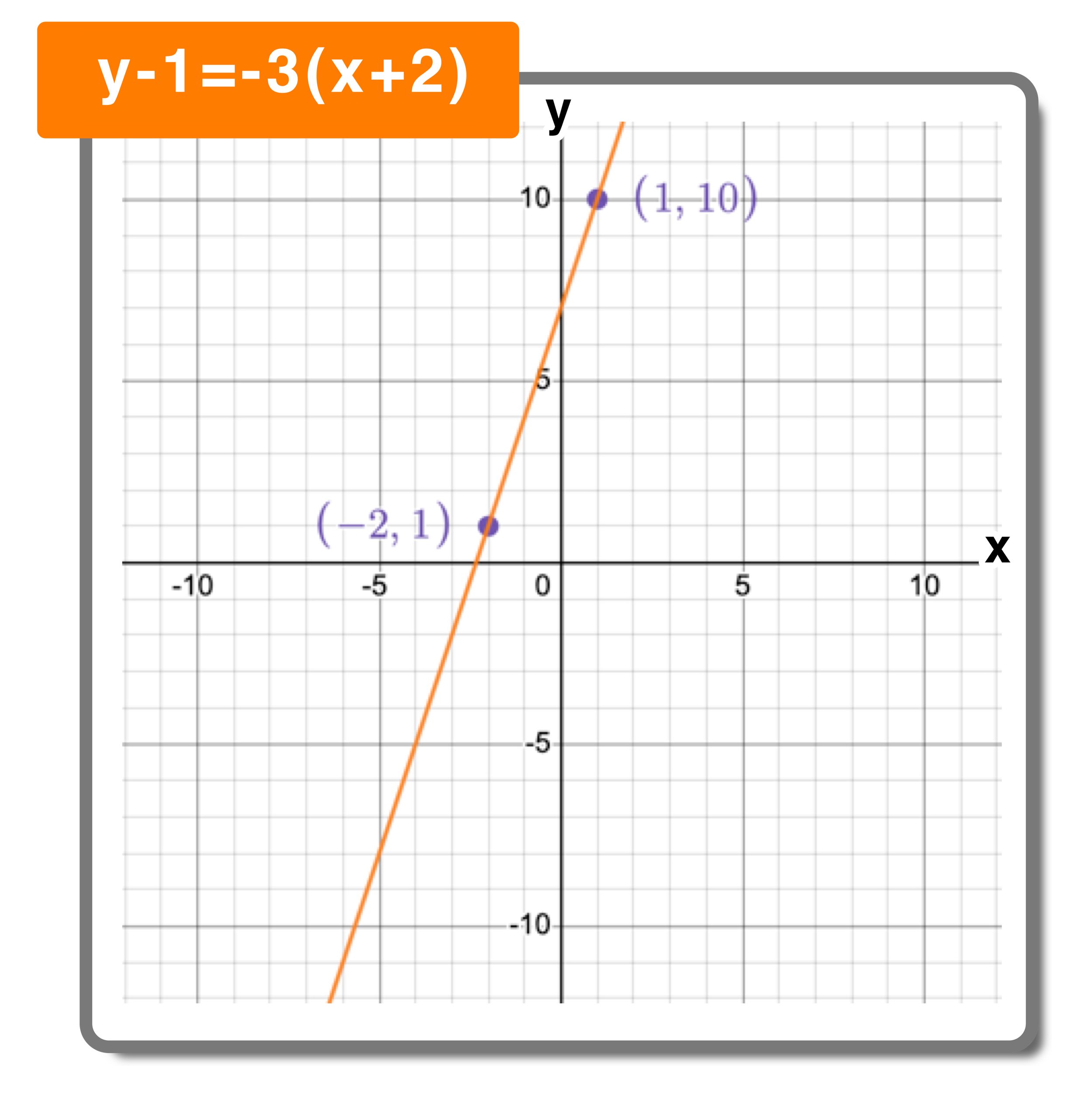Free Printable 4th Grade Math Puzzles
Whether it’s the start of a new school year, the everlasting stretch between October and April, or the final weeks leading up to summer break, keeping your 4th grade students engaged and interested in practicing and learning math every day is no easy task.
While there a ton of free resources, worksheets, puzzles, and activities for 4th graders available online, they are not all created equally—and, probably, the last thing that you need right now are more repetitive black-and-white practice worksheets.
Fortunately, if you are looking to mix things up and share some math activities that your 4th grade students will actually enjoy working on, then you’re in the right place. This post shares ten 4th Grade Math Puzzles that come in the form of printable pdf worksheets that include complete answer keys and are 100% free.
All of the free math puzzles for 4th grade students are samples from the worksheet libraries available on our membership website. Don’t worry, you do not have to be a member to download or print all ten of the free 4th grade math puzzle pdf worksheets.
Our puzzle worksheets can also be shared on online learning platforms like Google Classroom.
Each puzzle includes a brief description, suggestions for use, and links to learn more in case you are interested in accessing more information about puzzle activities including Two Truths and One Lie, Which One Doesn’t Belong?, our Order of Operations Puzzles, and more!
Additionally, all of our puzzles are designed with research-backed strategies that are proven effective for boosting student engagement and improving student performance. For more information, you can learn more about Stanford Education Professor Jo Boaler and her support of using visual math puzzles and activities to improve engagement and student performance.
Each of the following 4th Grade Math Puzzles includes a preview image along with a link to download.
Wait! Do you want FREE 4th grade math worksheets, activities, and puzzles in your inbox every week? 💁♀️ Click here to sign-up for our free email newsletter
10 Free Printable 4th Grade Math Puzzles
4th Grade Math Puzzle #1
▶ Order of Operations
(This puzzle is a sample from the 4th Grade Order of Operations puzzle library available on our membership site)
Puzzle Objective: Use your math skills to find the value of each symbol and the ? in the puzzle.
Download: ⤓ Click here to download your pdf worksheet
You Might Also Like:
The PEMDAS Rule Explained! (free guide for students w/ examples)
Puzzle Preview
4th Grade Math Puzzle #2
▶ Multiplication Table
(This puzzle is a sample from the 4th Grade Multiplication Tables puzzle library available on our membership site)
Puzzle Objective: Use your multiplication skills to find the value of each symbol in the times table.
Download: ⤓ Click here to download your pdf worksheet
You Might Also Like:
Free Printable Color Multiplication Table Practice Chart for Students
Puzzle Preview
4th Grade Math Puzzle #3
▶ Area Model
(This puzzle is a sample from the 4th Grade Area Models puzzle library available on our membership site)
Puzzle Objective: Find the value of each symbol in the area model so that the entire box represents the given value.
Download: ⤓ Click here to download your pdf worksheet
You Might Also Like:
Puzzle Preview
4th Grade Math Puzzle #4
▶ Logic Puzzles
(This puzzle is a sample from the 4th Grade Logic puzzle library available on our membership site)
Puzzle Objective: Observe the scales below and use your math skills to find the weight of each object, then answer the follow-up question.
Download: ⤓ Click here to download your pdf worksheet
You Might Also Like:
Puzzle Preview
Do you want more fun and engaging math resources in your inbox every week?
Join our mailing list to get free K-8 math activities, puzzles, and worksheets in your inbox every week (plus two free pdf math workbooks!)
4th Grade Math Puzzle #5
▶ Two Truths and One Lie!
(This puzzle is a sample from the 4th Grade Two Truths and One Lie! puzzle library available on our membership site)
Puzzle Objective: Use math skills and the given information to determine which of the three statements is a lie! Explain how you made your decision.
Download: ⤓ Click here to download your pdf worksheet
You Might Also Like:
Idea: How to Engage Your Students at the Start of Any Lesson with Two Truths and One Lie!
Puzzle Preview
4th Grade Math Puzzle #6
▶ Which One Doesn’t Belong?
(This puzzle is a sample from the 4th Grade Two Which One Doesn't Belong? puzzle library available on our membership site)
Puzzle Objective: Carefully observe each of the four graphics and decide which one does not belong with others. Explain your answer in writing.
Download: ⤓ Click here to download your pdf worksheet
You Might Also Like:
Why You Should Be Using "Which One Doesn't Belong?" to Ignite Student Thinking in Math
Puzzle Preview
4th Grade Math Puzzle #7
▶ Think-Notice-Wonder
(This puzzle is a sample from the 4th Grade Think-Notice-Wonder Writing Prompts puzzle library available on our membership site)
Puzzle Objective: Observe the graphic below and, in writing, complete the following: I think…, I notice…, I wonder…
Download: ⤓ Click here to download your pdf worksheet
You Might Also Like:
4th Grade Math Puzzle #8
▶ Riddles and Brain Teasers
(This puzzle is a sample from the 4th Grade Riddles and Brain Teasers puzzle library available on our membership site)
Puzzle Objective: Figure out the relationship/pattern between the numbers to determine the value of the ?
Download: ⤓ Click here to download your pdf worksheet
You Might Also Like:
Puzzle Preview
4th Grade Math Puzzle #9
▶ Riddles and Brain Teasers
(This puzzle is a sample from the 4th Grade Riddles and Brain Teasers puzzle library available on our membership site)
Puzzle Objective: Figure out the relationship/pattern between the numbers to determine the value of the missing numbers
Download: ⤓ Click here to download your pdf worksheet
You Might Also Like:
Puzzle Preview
4th Grade Math Puzzle #10
▶ Geometry Puzzles
(This puzzle is a sample from the 4th Grade Geometry Puzzles puzzle library available on our membership site)
Puzzle Objective: This one is trickier than you may think! Figure out how many total rectangles are in the diagram.
Download: ⤓ Click here to download your pdf worksheet
You Might Also Like:
Why is a Square also a Rectangle? Video Explanation for Students
Puzzle Preview
Wait!
Do you want on-demand access to hundreds of 4th grade math activities, worksheets, and puzzles like the ones shared in this post?
Why are more and more math teachers using Mashup Math resources every school year? Because our activities are super engaging and loved by students—and having access to all of our resources in one convenient place will take your lessons to the next level and cut your planning time in half!
Plus, all plans include a risk-free 14-day trial so that you can make sure that our resources will be useful to you and your students. Note that you while you do have to enter your payment information to create an account, as long as you cancel during the trial period, you will not be charged.
Want more free sample worksheets and puzzles in your inbox every week? 💁♀️
More K-8 Math Resources You Will Love:
Tags: 4th grade math puzzles, math puzzles 4th grade, math puzzles for 4th grade, 4th grade math challenge puzzles, 4th grade math logic puzzles, 4th grade math puzzle worksheets, 4th grade math puzzles pdf, math logic puzzles 4th grade, math puzzle 4th grade, math puzzles for 4th grade printables



